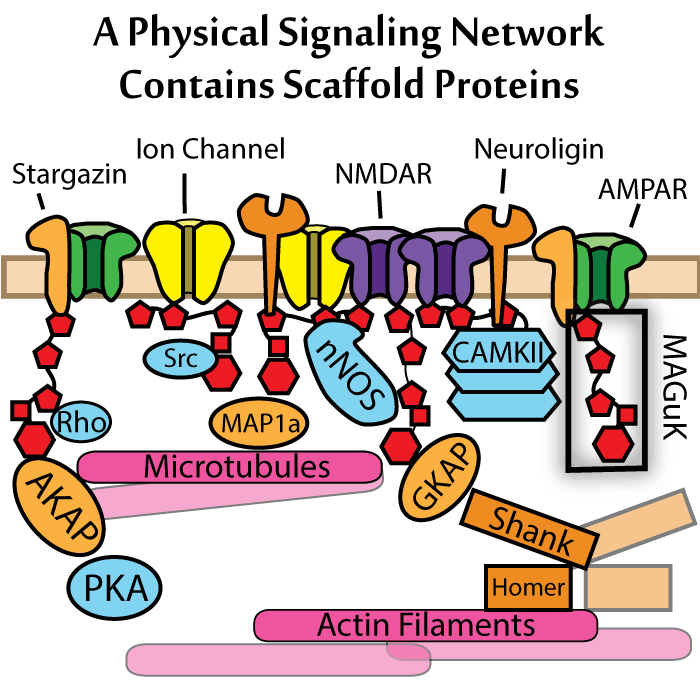Scaffolds and the Physical Organization of the Synapse
The connection between two neurons where communications occurs is called the synapse. One neuron is releasing neurotransmitter which could induce the neighboring neuron to fire an action potential (i.e. the electrical signal in the brain). The efficiency of receiving the neurotransmitter signal depends critically on whether there is a receptor in the vicinity to get the signal. Through evolution, this is no longer left to free diffusion. All the components needed for the signal to propagate are held together by scaffold proteins.
Taxonomy
Taxonomy encompasses the description, identification, nomenclature, and classification of biological function. Through the study of living systems, our understanding of the proteins involved in glutamate neurotransmission is nearly complete. Understanding the components of a system and their inherent functions is an important first step towards describing synaptic activity.
Physical Manifestation
As the name implies, scaffolds provide sites for workers to do their jobs. in this case, the workers are receptors and enzymes. To accommodate different workers (and allow for regulation), scaffold proteins often have a flexible supertertiary structure. There are several different families of scaffold in the synapse and each family can have multiple members working together. Scaffolds organize signal transduction because what binds together determines what works together. This can link different signaling pathways together in novel ways to support complex behavior. Current approaches to treat disease are targeted at the “worker” proteins. We want to shed light on the underlying scaffolds that invisibly perform their critical roles. Such studies will open new avenues to intervene in synaptopathic disorders.
Reconstitution
Our efforts are devoted to reconstituting synaptic scaffolding from first principles. Observational studies of living systems are limited by the complexity of the brain. By starting with single molecules, we can work towards creation of a reconstituted scaffolding system built in the lab from purified components. To produce the needed materials, the lab is skilled in molecular biology and protein chemistry. We observe our scaffolding reactions with fluorescence microscopy at single molecule resolution.



